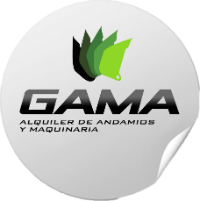effective use of patient care materials
Setting A wide range of settings within primary and secondary care including hospitals and primary care centres. While print materials still form the cornerstone of health and social services information, some materials may be of little or no use to people with limited-literacy skills. Language Level and Voice . What this adds to what was known? The use of patient sitters was the third low est scoring . Separate tools are available for use with print and audiovisual materials. Printed educational materials (PEMs) are commonly used simple interventions that can be used alone or with other interventions to disseminate clinical evidence. Objective To explore evidence on the links between patient experience and clinical safety and effectiveness outcomes. Make sure your patient education materials are easily understood by the average layperson. G. Other Topics. In developing effective written teaching aids, language level must be at or below the fifth-grade level.This is because not all clients would benefit from technical words even though their usage would facilitate accuracy of instructions. Patient handling is the top cause of injury among care workers. Participants A wide range of demographic groups and age groups. the patient’s care: the safe use of medications, the safe use of medical equipment, potential interactions between medications and food, nutritional guidance, and rehabilitation techniques. And you don't have to start from scratch—there are many materials available to get you started. Additionally, measures for collaboration and communication have been identified. Patients quickly forget much of what physicians tell them. This is more effective than the patient getting a mass email on the matter.” This approach is also useful for emphasizing preventative care to patients, another important aspect of chronic disease management. Physically dependent people need to be assessed, taking into account the task being performed and the space in which the work will take place. In the role of a nurse leader, describe the effective use of patient-care technologies across the care continuum in a chosen health care system. Many voluntary organizations and government agencies provide patient teaching materials at no cost to health care professionals and consumers. This guide, Clear & Simple, is designed to assist health communicators in developing audience-appropriate information and communicating effectively with people with low-literacy skills. The use of effective communication among patients and healthcare professionals is critical for achieving a patient's optimal health outcome. It is designed as a guide to help determine whether patients will be able to understand and act on information. Care coordination involves deliberately organizing patient care activities and sharing information among all of the participants concerned with a patient's care to achieve safer and more effective care. To promote the effective use of patient-reported outcomes (PROs) in clinical practice, a variety of methods can be used to aid interpretation of PRO scores and facilitate action based on PRO results. Directions. QUESTION In the role of a nurse leader, describe the effective use of patient-care technologies across the care continuum in a chosen health care system.PreparationChoose any type of health care system, fo In the role of a nurse leader, describe the effective use of patient-care technologies across the care continuum in a chosen health care […] They have been shown to have a small effect on health professional behaviour. The design of all patient care services should be patient-centered, timely, efficient, evidence-based, safe, and coordinated. AID a one-page executive summary your organization could use to disseminate these ideas. Intent of PFE.3 The organization routinely provides education in areas that carry high risk to patients. The implementation of change model follows the actual practice of improving patient care as closely as possible. 9 As most patient contact with health care is through primary healthcare centres, then the information provided therein must be of an appropriate standard. Preparation. The Expanded Care Model delineates the above guidelines for healthcare teams to be prepared and take proactive steps in ensuring positive patient health outcomes. Design Systematic review. Write 3–4 pages describing the effective use of patient-care technologies, communication systems, and information systems across the care continuum of a health care system of your choice. Although patient education is a nursing competency (National Research Council, 2011), there are barriers to effective patient teaching in acute care settings. Nurses in acute care are challenged by their limited time for teaching. Studies have shown that most health care materials are written at a 10th-grade level while the average American reading level is about eighth grade. Add a one-page executive summary your organization could use to disseminate these ideas. Use of … At the center of hospice and palliative care is the belief that each of us has the right to die pain-free and with dignity, and that our families will receive the necessary support to allow us to do so [3]. Thus, in this booklet I describe how to develop effective patient education handouts. Here are five tips to writing effective teaching aids for patient education: 1. Choose any type of health care system, for example, acute, ambulatory, or home health or telehealth.
Tootsie Tomanetz Church, Essay On Heroism, Can I Use Bottled Water In My Cpap Machine, Samsung Tab S6 Lite S Pen Nibs, Video Converter Apk For Windows 10, Ply Box Beams,


Dejar un comentario
¿Quieres unirte a la conversación?Siéntete libre de contribuir